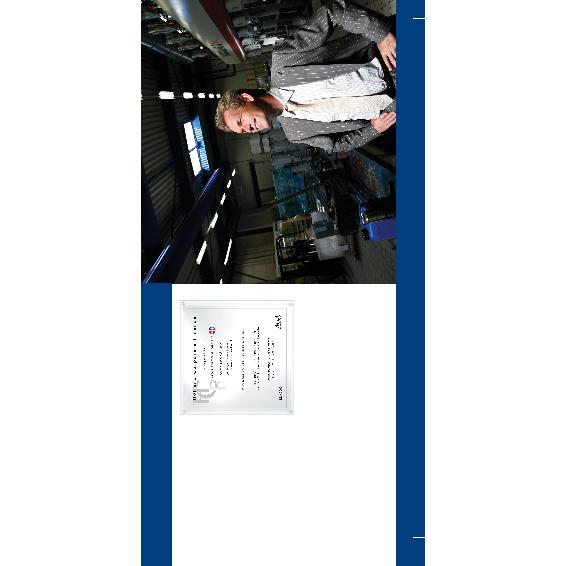
Zwart
Harry Sieljes
Sale of Jarvis Porter Zwart to Wagram and management
Who could have seen a future for a producer of coffee and tea
packaging that was operating at a loss and had lost touch with
the market? And, to make things even worse, whose business
wasn't even in compliance with the environmental regulations
and had been surviving on a mere three clients. `The operation
was really on its last legs. It was just hopeless', Harry Sieljes,
director of printing house Zwart, remembers. Although he has left
Zwart'sofficefurnishingsexactlyastheywerebackthen,today
they include two showcases that display the modern, colourful
packaging which underscores just how much his company has
changed.
The operation was really on its last legs.
It was just hopeless
Tricky situation
Sieljes came to Zwart in 1998, which was then part of listed Jar-
vis Porter in the UK. A year later, the group sought to sell its
Amersfoort subsidiary, and Sieljes was ordered to supervise the
selling process in the Netherlands. `I knew Arthur Tjon of Holland
Corporate Finance from the racing car scene, so I brought him
on board', he says. Eventually, they found a strategic buyer and
a bid was on the table. Then their director died, right before the
big day. Without his signature, the deal seemed doomed.
After consulting Jarvis Porter, a management buy-out appeared
to be the best alternative. According to Sieljes, two points were
crucial: `What would clients such as Unilever, Nestlé and Sara
Lee think of our little printing shop after it became independent?
Andwherewouldwefindsomeonewillingtomakeaheavyin-
vestment without the prospect of a quick return?' Sieljes himself
convinced the clients, and Arthur Tjon found Wagram Equity
Partners ready to invest. `In fact, we only had a business model
for sale. We wanted to make high-quality, small-scale produc-
tionruns,withgreatflexibilityandhigh-speeddeliveryinorder
to compete with low-wage countries. But that story really was
| | | | | | | | | | | | | | |
| | | | | | | | | | | | | | |
80
81

